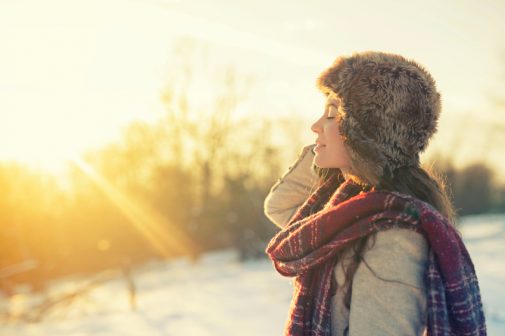Do you still need sunscreen in October?

Many people tend to ease up on the sunscreen once cooler weather arrives and beach days are few and far between. But the fact of the matter is, experts say you absolutely need sun protection during the fall and winter months.
Dr. Matthew Evans, a dermatologist at Advocate Dreyer, says that UV rays—the stealthy, non-burning kind that can cause skin cancer, hyperpigmentation and wrinkles—are out year-round.
“UV rays don’t know that it is October and November in Chicago,” say Dr. Evans. “If there’s light, there’s sun. And while the sun is certainly less intense in colder months, I still see patients coming in with sunburns from being out at their child’s soccer game, or sitting in the sun while attending a college football game.”
Dr. Evans estimates that exposure to 10 hours of winter sun each week equals approximately a full hour of height-of-summer sun. Those five-minute walks add up. And sitting by a window indoors adds up, too.
In order to keep your skin protected in the fall, Dr. Evans offers these tips:
- Use sunscreen every day you’re outside. The sun emits harmful UV rays year-round. 95 percent of the UV radiation that we are exposed to is UVA.
- Use sunscreen even when it’s not sunny. On cloudy days, up to 80 percent of the sun’s harmful UV rays can penetrate your skin.
- Use the same sunscreen you used in the summer. The Food & Drug Administration (FDA) actually requires that all sunscreens be stable and at their original strength for at least three years, so it’ll still be perfectly usable during the chillier months.
- Include sunscreen when you are packing for your winter vacation day at the beach, or taking the yearly winter ski trip. Snow, sand and water increase the need for sunscreen because they reflect the sun’s rays. Reflection of radiation from snow requires aggressive sunscreen protection, potentially even more than summertime, as individuals participate in snow activities like skiing and snowboarding. Almost 80 percent of UV radiation is reflected from snow, while only 25 percent from sand.
- Consider sunglasses, as they offer protection from UV rays. Sunlight reflecting off snow, sand or water further increases exposure to UV radiation and your risk of developing eye problems. Certain sunglasses can help protect your eyes. Choose those labeled with a UVA/UVB rating of 100 percent to get the most UV protection. Do not mistake dark-tinted sunglasses as having more UV protection. The darkness of the lens does not indicate its ability to shield your eyes from UV rays. Many sunglasses with light-colored tints, such as green, amber, red and gray can offer the same UV protection as very dark lenses.
- Protect your pucker.Windburned lips can be a pain; prevent them by applying a soothing lip balm with sunscreen.
And remember, even if you’re planning to avoid the sun all fall and winter, exposure aids our bodies in the production of vitamin D, and a lack of exposure to the sun can cause a vitamin D deficiency. Among children, vitamin D deficiency is a common cause of rickets. Individuals with limited sun exposure need to include good sources of vitamin D in their diet or speak with their physician about the use of Vitamin D supplements.
Related Posts
Comments
About the Author
health enews staff is a group of experienced writers from our Advocate Health Care and Aurora Health Care sites, which also includes freelance or intern writers.

















